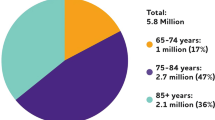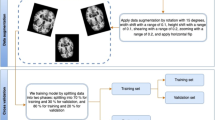Abstract
The mechanism of detecting the neurodegenerative disorder from Magnetic Resonance Images (MRIs) is one of the demanding and critical process in recent days. For this purpose, the existing works introduced some of the segmentation and classification techniques, which were used to detect the abnormal region from the brain images. However, it limits the problems of over segmentation, inefficient classification, and more complexity. The early predictions and the diagnosis process of neurodegenerative-disorders were accomplished by the use of segmentation and classification approaches of various methods. The proposed methodology focused on developing an integrated segmentation and classification techniques for an accurate brain disease classification. Here, the most extensively used segmentation techniques such Particle Swarm Optimization (PSO) and Self-Organizing Map (SOM) techniques are integrated for enabling an efficient image segmentation. In addition, it segments the Grey Matter (GM), White Matter (WM) and Cerebrospinal Fluid (CSF) regions. Consequently, the most suitable features are extracted from the segmented image by using the Neighbor Intensity Pattern (NIP) extraction technique. Based on these features, the normal and abnormal regions are classified by the use of an integrated Neural Network and K-Nearest Neighbor (KNN) classification techniques. The hybridization of the work is, that it integrates the benefits of various segmentation and classification techniques, which leads to increased detection efficiency and classification accuracy. The performance of these techniques are evaluated by using two different datasets such as ADNI and PPMI, which contains more number of brain MRIs. Also, various performance parameters have been utilized to test the results of the proposed system. Moreover, the traditional classification techniques are considered to compare the results of the proposed classification technique. During experimental evaluation, the performance of the techniques are validated by using different measures, and the results are compared with other existing techniques for analyzing the efficiency of proposed mechanism. At last, the results stated that the NN-KNN outperforms the other techniques by exactly locating the affected regions. The proposed framework exhibits the higher performance of accuracy level with 98.6%, sensitivity rate of 95%, exposed 96% of specificity rate and acquires the efficient precision rate of 99.21%. In future, this work can be expanded by using some advanced techniques for classifying other brain diseases.











Similar content being viewed by others
References
Abdullah A, Hirayama A, Yatsushiro S, Matsumae M, Kuroda K (2020) A multi-stage clustering approach for cerebrospinal fluid image segmentation. Life Sci J 17(12):59–66
Bento M, Souza R, Salluzzi M, Frayne R (2018) Normal brain aging: Prediction of age, sex and white matter hyperintensities using a mr image-based machine learning technique. In: International Conference Image Analysis and Recognition, pp 538–545
Betrouni N, Yasmina M, Bombois S, Pétrault M, Dondaine T, Lachaud C et al (2020) Texture features of magnetic resonance images: an early marker of post-stroke cognitive impairment. Transl Stroke Res 11:643–652
Chan A (2019) Maximum pseudolikelihood estimation with Markov random fields in the segmentation of brain magnetic resonance images. The University of Queensland. 2019:1–179
Holilah D, Bustamam A, Sarwinda D (2021) Detection of Alzheimer’s disease with segmentation approach using K-Means Clustering and Watershed Method of MRI image. Journal of Physics: Conference Series 1725(1):012009
Kalam A, Das S, Sharma K (2018) Advances in electronics, communication and computing. Springer, Berlin
Khatri U, Kwon G-R (2020) An efficient combination among sMRI, CSF, Cognitive Score, and APOE ε4 biomarkers for classification of AD and MCI Using Extreme Learning Machine. Computational Intelligence and Neuroscience 2020:1–18
Kumar PR, Arunprasath T, Rajasekaran MP, Vishnuvarthanan G (2018) Computer-aided automated discrimination of Alzheimer’s disease and its clinical progression in magnetic resonance images using hybrid clustering and game theory-based classification strategies,. Comput Electr Eng 72:283–295
Liu M, Zhang D, Shen D (2016) Relationship induced multi-template learning for diagnosis of Alzheimer’s disease and mild cognitive impairment. IEEE Trans Med Imaging 35:1463–1474
Ma D, Lu D, Popuri K, Wang L, Beg MF (2020) Alzheimer's disease neuroimaging initiative. Differential diagnosis of frontotemporal dementia, alzheimer's disease, and normal aging using a multi-scale multi-type feature generative adversarial deep neural network on structural magnetic resonance images. Front Neurosci 14:853
Maikusa N (2020) Harmonized Z-scores obtained from the large scale normal MRI databased to evaluate brain atrophy for neurodegenerative disorder. bioRxiv
Oppedal K, Engan K, Eftestøl T, Beyer M, Aarsland D (2017) Classifying Alzheimer’s disease, Lewy body dementia, and normal controls using 3D texture analysis in magnetic resonance images. Biomed Signal Process Control 33:19–29
Ortiz-Ramón R, Hernández MdCV, González-Castro V, Makin S, Armitage PA, Aribisala BS et al (2019) Identification of the presence of ischaemic stroke lesions by means of texture analysis on brain magnetic resonance images. Comput Med Imaging Graph 74:12–24
Osadebey ME, Pedersen M, Arnold DL, Wendel-Mitoraj KE, f. t. Alzheimer’s Disease Neuroimaging Initiative (2018) Standardized quality metric system for structural brain magnetic resonance images in multi-center neuroimaging study. BMC Med Imaging 18:1–19
Prashanth R, Roy SD, Mandal PK, Ghosh S (2017) High-accuracy classification of parkinson’s disease through shape analysis and surface fitting in 123I-Ioflupane SPECT imaging. IEEE J Biomed Health Inf 21:794–802
Priyadarshini J (2020) Machine learning algorithms for the diagnosis of Alzheimer’s and Parkinson’s Disease. IJATCSE Int J 9:2278–3091
Qiu S, Joshi PS, Miller MI, Xue C, Zhou X, Karjadi C, et al (2020) Development and validation of an interpretable deep learning framework for Alzheimer’s disease classification. Brain 143:1920–1933
Rallabandi VS, Tulpule K, Gattu M, Initiative AsDN (2020) Automatic classification of cognitively normal, mild cognitive impairment and Alzheimer’s disease using structural MRI analysis. Inf Med Unlocked 18:100305
Sivaranjini S, Sujatha C (2020) Deep learning based diagnosis of Parkinson’s disease using convolutional neural network,. Multimed Tools Appl 79:15467–15479
Solana-Lavalle G, Rosas-Romero R (2021) Classification of PPMI MRI scans with voxel-based morphometry and machine learning to assist in the diagnosis of Parkinson’s disease,. Comput Methods Programs Biomed 198:105793
Uysal G, Ozturk M (2019) Using machine learning methods for detecting Alzheimer’s disease through hippocampal volume analysis. In: 2019 Medical Technologies Congress (TIPTEKNO), pp 1–4
Wang S-H, Zhang Y, Li Y-J, Jia W-J, Liu F-Y, Yang M-M et al (2018) Single slice based detection for Alzheimer’s disease via wavelet entropy and multilayer perceptron trained by biogeography-based optimization. Multimed Tools Appl 77:10393–10417
Wilson B (2020) Classification of local patches extracted from magnetic resonance images using machine learning to identify iron depositions in brain. LMCST J Eng Technol 5:2278–2672
Author information
Authors and Affiliations
Corresponding author
Ethics declarations
I am Selvaganesh B, Hereby state that the manuscript entitled “A HYBRID SEGMENTATION AND CLASSIFICATION TECHNIQUES FOR DETECTING THE NEURODEGENERATIVE DISORDER FROM BRAIN MAGNETIC RESONANCE IMAGES” submitted to Multimedia Tools and Applications, I confirm that this work is original and has not been published elsewhere, nor is it currently under consideration for publication elsewhere. I am Research Scholar, Anna University, Chennai, Tamil Nadu India.
Conflict of interest
I confirm that this work is original and has not been published elsewhere, nor is it currently under consideration for publication elsewhere.
Competing interests
None of the authors have any competing interests in the manuscript.
Additional information
Publisher’s Note
Springer Nature remains neutral with regard to jurisdictional claims in published maps and institutional affiliations.
Rights and permissions
About this article
Cite this article
Selvaganesh, B., Ganesan, R. A hybrid segmentation and classification techniques for detecting the neurodegenerative disorder from brain Magnetic Resonance Images. Multimed Tools Appl 81, 28801–28822 (2022). https://doi.org/10.1007/s11042-022-12967-0
Received:
Revised:
Accepted:
Published:
Issue Date:
DOI: https://doi.org/10.1007/s11042-022-12967-0




